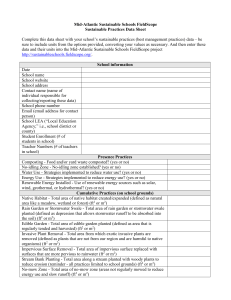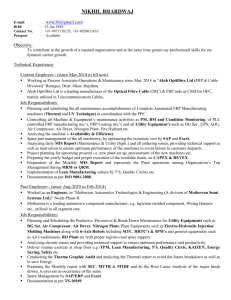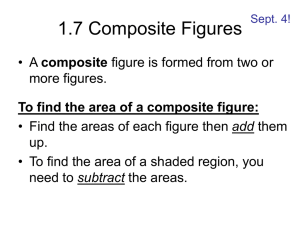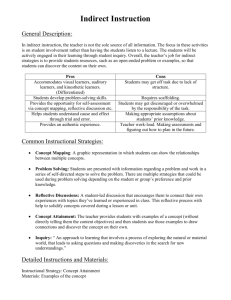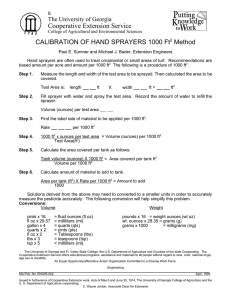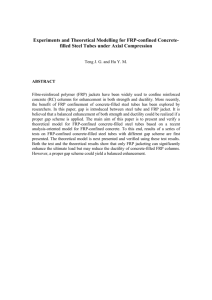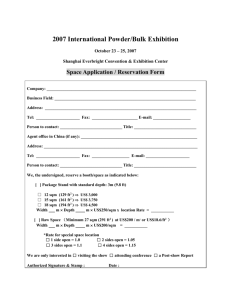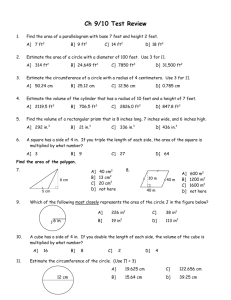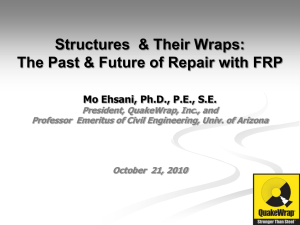Data Preparation Sheet
advertisement
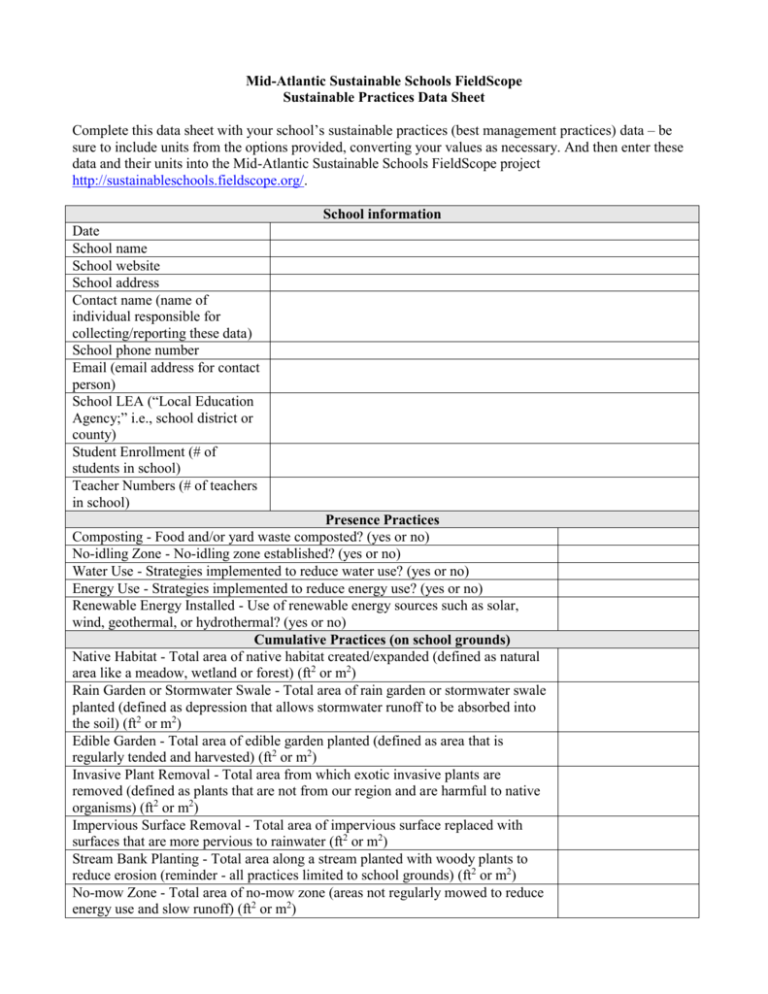
Mid-Atlantic Sustainable Schools FieldScope Sustainable Practices Data Sheet Complete this data sheet with your school’s sustainable practices (best management practices) data – be sure to include units from the options provided, converting your values as necessary. And then enter these data and their units into the Mid-Atlantic Sustainable Schools FieldScope project http://sustainableschools.fieldscope.org/. School information Date School name School website School address Contact name (name of individual responsible for collecting/reporting these data) School phone number Email (email address for contact person) School LEA (“Local Education Agency;” i.e., school district or county) Student Enrollment (# of students in school) Teacher Numbers (# of teachers in school) Presence Practices Composting - Food and/or yard waste composted? (yes or no) No-idling Zone - No-idling zone established? (yes or no) Water Use - Strategies implemented to reduce water use? (yes or no) Energy Use - Strategies implemented to reduce energy use? (yes or no) Renewable Energy Installed - Use of renewable energy sources such as solar, wind, geothermal, or hydrothermal? (yes or no) Cumulative Practices (on school grounds) Native Habitat - Total area of native habitat created/expanded (defined as natural area like a meadow, wetland or forest) (ft2 or m2) Rain Garden or Stormwater Swale - Total area of rain garden or stormwater swale planted (defined as depression that allows stormwater runoff to be absorbed into the soil) (ft2 or m2) Edible Garden - Total area of edible garden planted (defined as area that is regularly tended and harvested) (ft2 or m2) Invasive Plant Removal - Total area from which exotic invasive plants are removed (defined as plants that are not from our region and are harmful to native organisms) (ft2 or m2) Impervious Surface Removal - Total area of impervious surface replaced with surfaces that are more pervious to rainwater (ft2 or m2) Stream Bank Planting - Total area along a stream planted with woody plants to reduce erosion (reminder - all practices limited to school grounds) (ft2 or m2) No-mow Zone - Total area of no-mow zone (areas not regularly mowed to reduce energy use and slow runoff) (ft2 or m2) Green Roof - Total area of green roof installed (defined as area of roof covered in plants to absorb rainwater) (ft2 or m2) Native Woody Plants - Total number of native trees or shrubs planted (#) Stream Cleaning - Total length of stream cleaned (reminder - all practices are limited school grounds) (ft or m) Rain Barrels - Total volume of installed rain barrels (gal or l) Outdoor Learning Structures - Total number of structures created for outdoor learning (e.g., covered pavilion or trail) (#) Average Practices (in an academic year) Local Food - Average number of times “local food” is served in school lunches in a typical academic year (defined as food from within ~100 miles of school) (#) Recycled Materials - Average weight of materials recycled within a typical academic year (lbs or kg) Student Transport - Average percentage of students carpooling, using public transit, biking or walking within a typical academic year (%/yr) Schoolyard Learning - Average number of times the schoolyard is used for learning within a typical academic year (#/yr) Energy Use Reduction – Average amount of energy use reduction in a typical academic year (kwh) Water Use Reduction – Average amount of water use reduction in a typical academic year (gal) Additional Metrics - Additional sustainable practices in your school such as “we grew and ate 26 lbs. of vegetables” or “we reduced our carbon footprint by 5%." Sustainable School Award(s) (circle each sustainable award your school has received): Maryland Green School; New York Environmental Excellence; NWF Eco-School USA; PLT GreenSchool; USDE Green Ribbon School; Virginia Naturally School; West Virginia Sustainable Schools; Other Award (list) ___________________ _____________________________________________________________________________________ Grants and Funding (circle each grant or source of funding your school has received): NOAA BWET Grant; Chesapeake Bay Trust (CBT) Grant; State Grant (for example, Department of Education, Natural Resources, etc.); Federal Grant (any Federal Grant other than NOAA BWET); Private Foundation Grant (any private foundation grant other than CBT); Corporate Grant (for example, Lowes, Target, etc.); Parent-Teacher Organization Fundraising; Student Fundraising; School Funding (any funding from the school budget); Other Sources (list) _________________________________________________________________________________ _____________________________________________________________________________________ Environmental Literacy Practices (you will need to complete the following questions for EACH grade level in your school) Grade Level Students in OLEs (# of unique students participating in any outdoor learning experience at schoolyard or off-site) Students in MWEEs (# of unique students participating in any “meaningful watershed education experience” at schoolyard or off-site) Teachers Providing Enviro Ed (# of teachers providing instruction specific to environmental education) Teachers Needing Enviro Ed PD (# of teachers needing formal professional development in environmental education)
